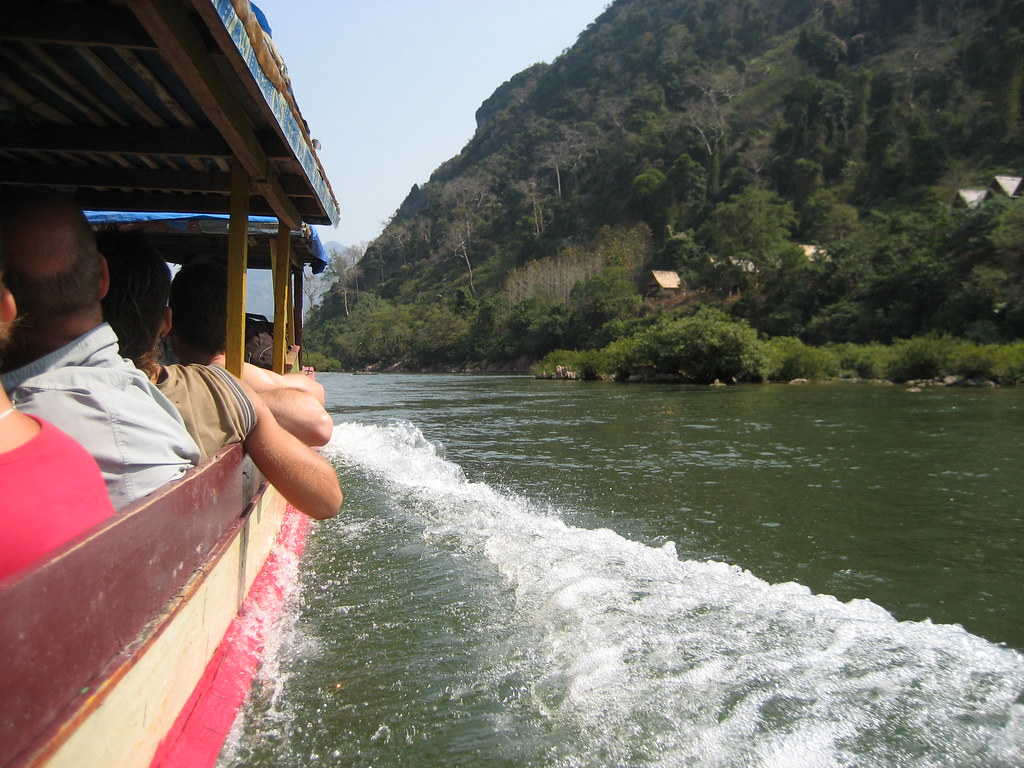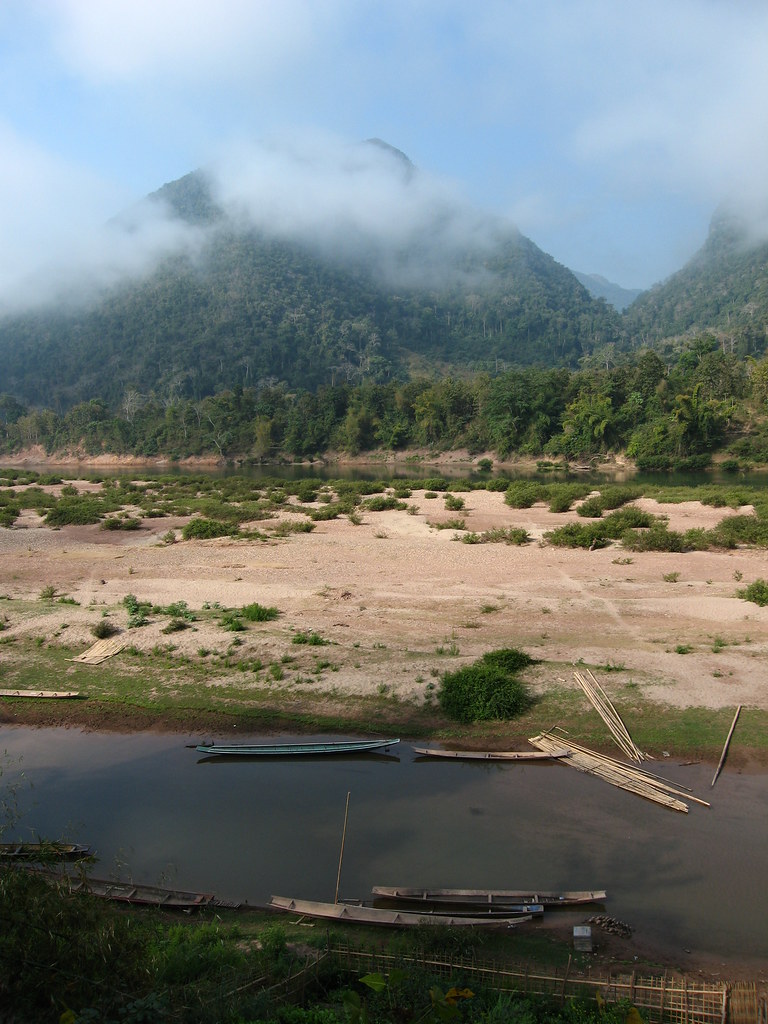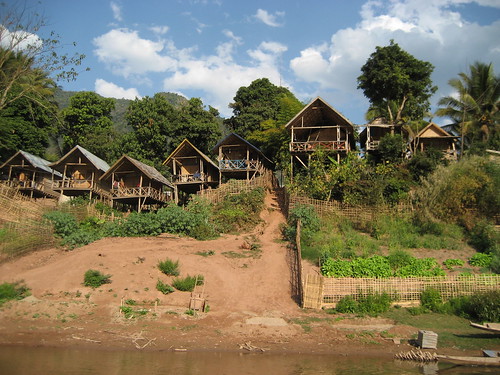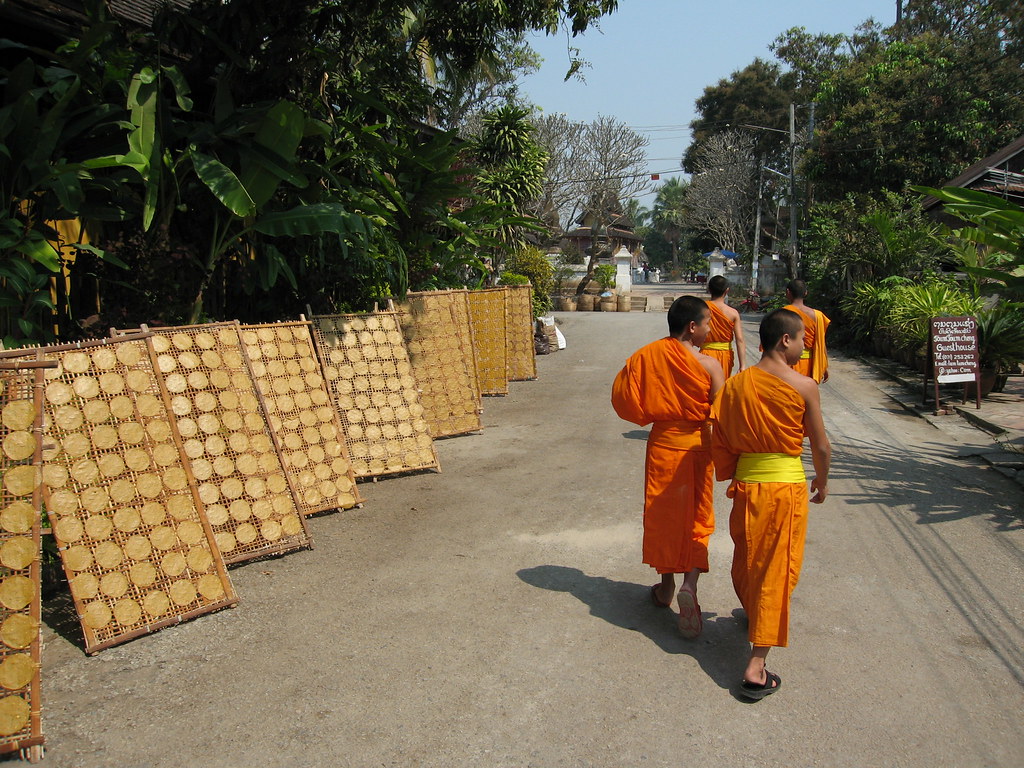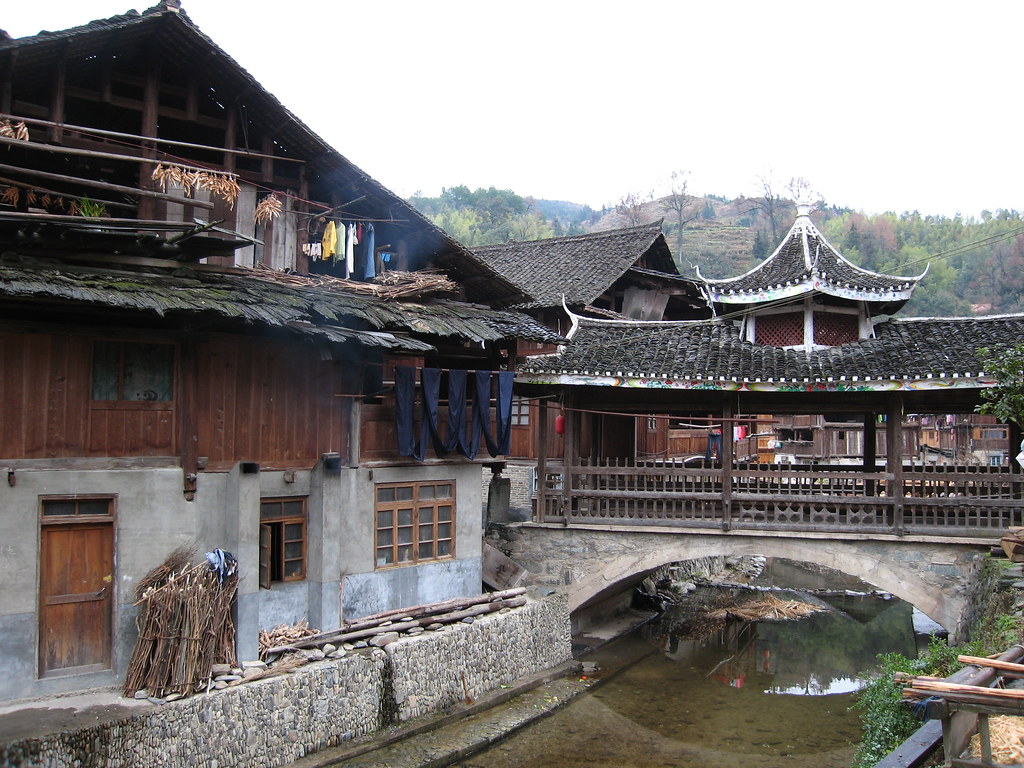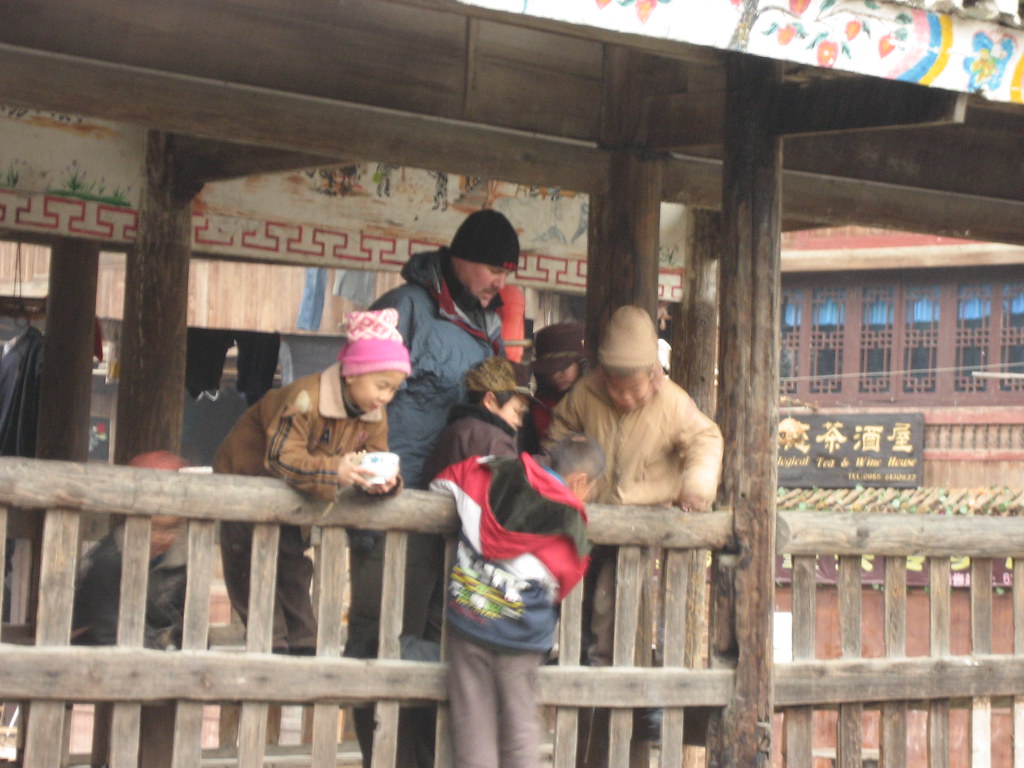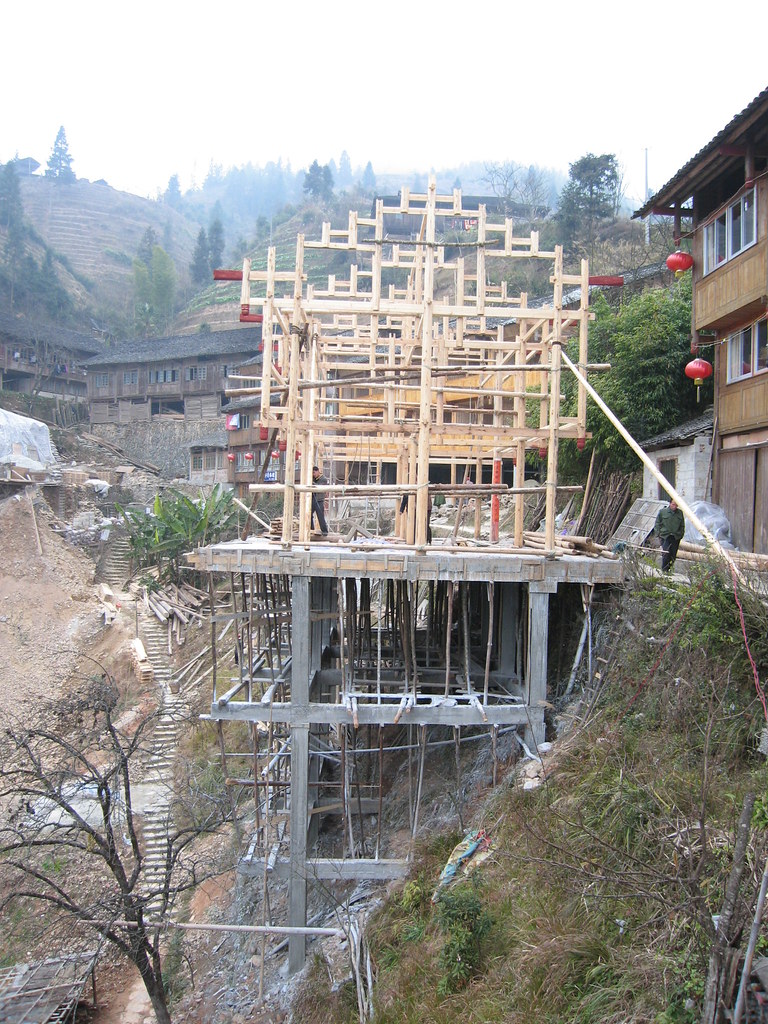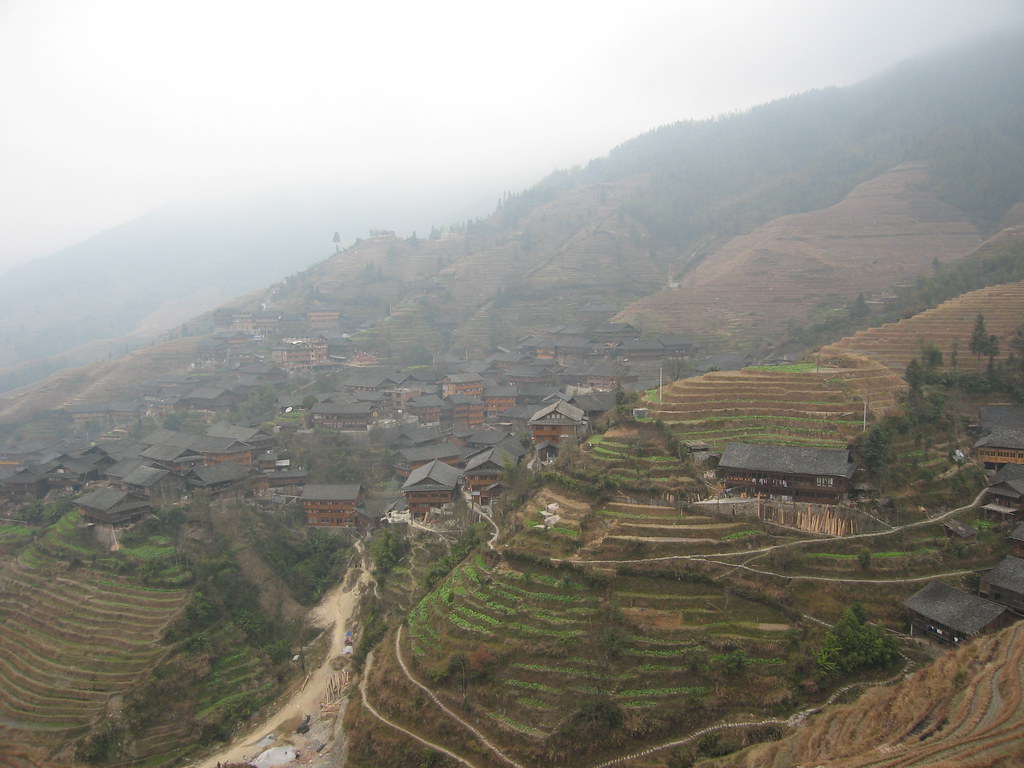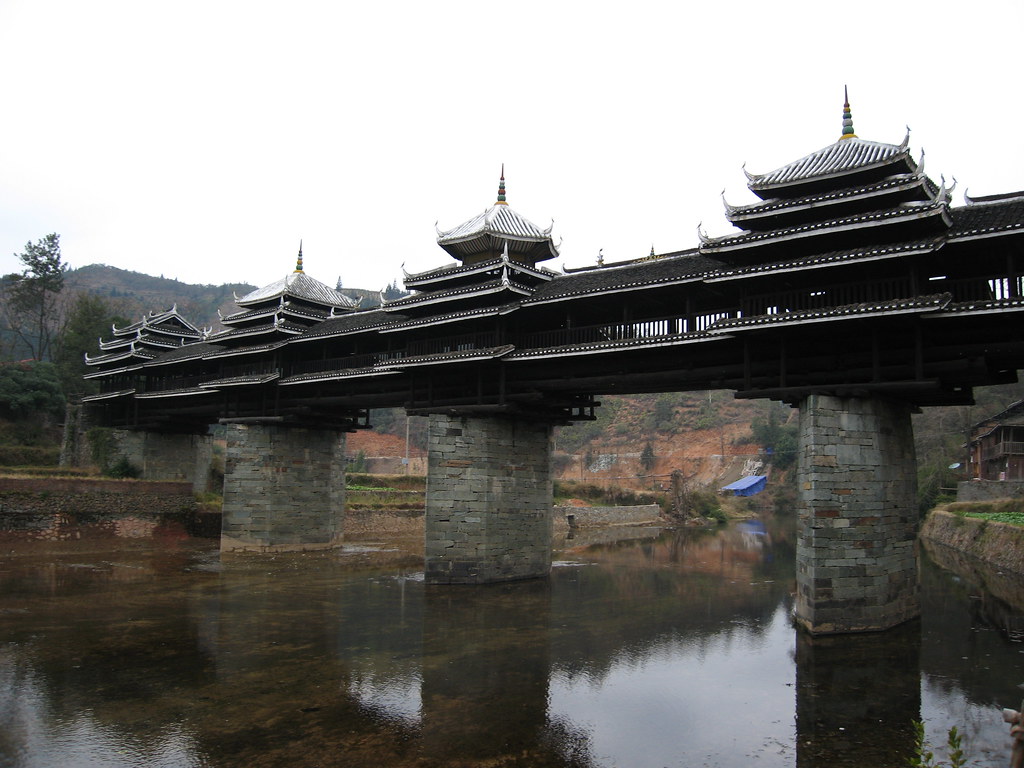
:: Chengyang Wind & Rain Bridge ::
A guesthouse owner commented that no tourists were coming to Chengyang these days because the main road between Longsheng and Sanjiang was "broken". It is a perfect way to describe the "route"; for hours we were thrown around in a little local bus, there were road works (huge boulders and deep holes) the entire way and the conditions got progressively worse as we approached Sanjiang. As usual all the men on the bus chain smoked so to get a breath of fresh air meant opening the window and letting the biting cold in. Our little bus had a double bed and mattress tied onto the roof - this was a light load in comparison to some of the other buses which had beds, sofas, entertainment units and huge boxes stacked high. When stuck in these situations all you can do is let the mind wander and hope that the good road is just around the corner. We stopped a few times en route to squeeze in more passengers, let a man on with a bag of piglets and to let the old woman and her roof top bed off.
Making it to the town of Sanjiang just as darkness fell we located the local minivan drivers and went about finding one to take us to the small Dong village of Chengyang some 20km away. As usual 10 minutes were wasted trying to find a driver who would take us for the correct price there were at least six vans sharking around us with out of this world quotes. We eventually found an honest guy who wanted the business and climbed into his van, half an hour later, after we'd a bum on every seat, we headed off.
Chengyang is made up of eight minority Dong villages, the Dong villages were traditionally built alongside rivers so people lived opposite each other. To connect the villages "Wind and Rain" covered bridges were built. The covered wooden bridges are built without using any nails, the interior corridor is ornately carved, they contain tower like kiosks and a long bench lining each side - a resting spot for the locals (selling spot to the tourists these days). Chengyang or Yongli Bridge is regarded as the best preserved "Wind and Rain" bridge in the region.
In pitch darkness the van let us off at Chengyang Bridge that apparently lead to the Ma'an village. We were barely out of the van when an official looking guy in a uniform appeared from nowhere (just like the troll in Billy Goat's Gruff) and told us we couldn't cross the bridge without a ticket. Taking out our miner headlamps we told him we'd be back tomorrow and looked around for the concrete service bridge. In the darkness we settled for the first guesthouse we came across that had a light on. Wandering around looking for food later we happened upon a small new guesthouse & restaurant run by a local tourism graduate Yang and his girlfriend. He generously invited us to his nephew's "one year old" birthday party - a Dong tradition where the whole village is invited to celebrate. He lead us to his sister's house and into a room full of people of all ages sitting on little wooden stools around a big cooking fire in the centre of the room. The women were busy stirring huge mass catering pots of what looked like stew over the fire.
We had a fantastic evening where everyone welcomed us to the village. When it came to eating multiple servings of sour fish, pickled pork, pickled vegetable and bowls of rice congee (rice porridge) were placed on the table (The Dong like their sour food). The grandfather of the family sat beside us serving warm rice wine and leading the table in the local toast "pong bei". We were initially concerned that our presence might leave things a little tight on the food front... far from it ... there was enormous quantities that we never even touched. We were very lucky to have tasted all the Dong dishes in this setting. Dong food is very distinctive, lots of the dishes are pickled and prepared like a stew, their local speciality is pickled duck which is best eaten a least 5 years later. (The duck is dried over the fire then packed in pots for at least 5 years - the longer the better)
The villagers told us that the best time to visit the Dong minorities is during Chinese New Year. This is the one day the Dong people are permitted to marry - there will be about 200 marriages this year. This brings the whole village out in celebration as dowry exchanges and traditional parades are part of the Dong wedding tradition.
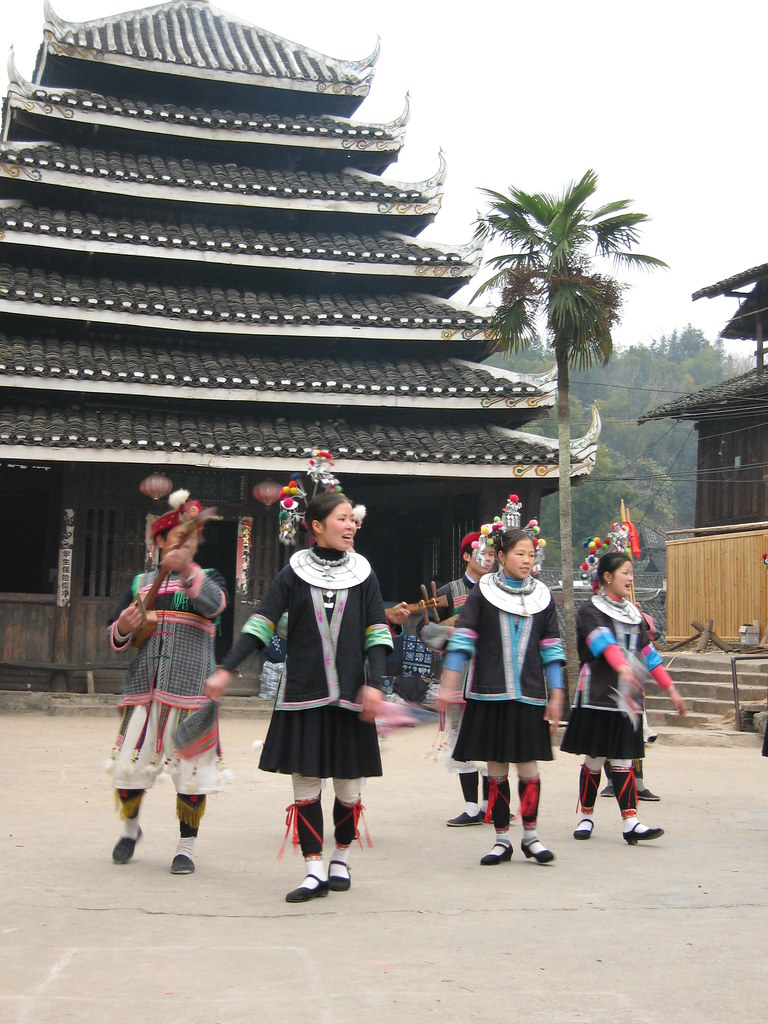
:: Ma'an Village Drum Tower & Performers ::
We moved to "Yang's Guesthouse" the following morning and explored the surrounding villages. The houses are wooden and built in a unique Dong style with the proud focal point of each village being a drum-tower. For a small donation you can have your name immortalised on slate in one of the towers. There is a thriving local industry in the area and on our walk around we saw the local butcher slaughtering and gutting a pig, rice being thrashed, quilted covers being packed and the busy local market's comings and goings.

:: Some for pickling, some for dinner & maybe even some for the pooch ::
The Dong minority didn't have a writing system of their own until 1958, their history and stories were all recorded and passed down through songs. The most popular form of song is the 'grand song' which contains various themes ranging from love stories to historical events to moral lessons. These are all performed by a chorus, and the formal performing place is the village drum-tower.That afternoon at the Ma'an village drum-tower we got to see some locals (some of which we had met at the party) perform these songs and dances - we even got to join in in the finale!

Cold weather and subzero nights are keeping us on the move.
Thanks to the generosity of Yang and his family, we fantastically unique experience in this village. When the road is "fixed" it is a worthwhile spot to spend a couple of days exploring.
Read more...

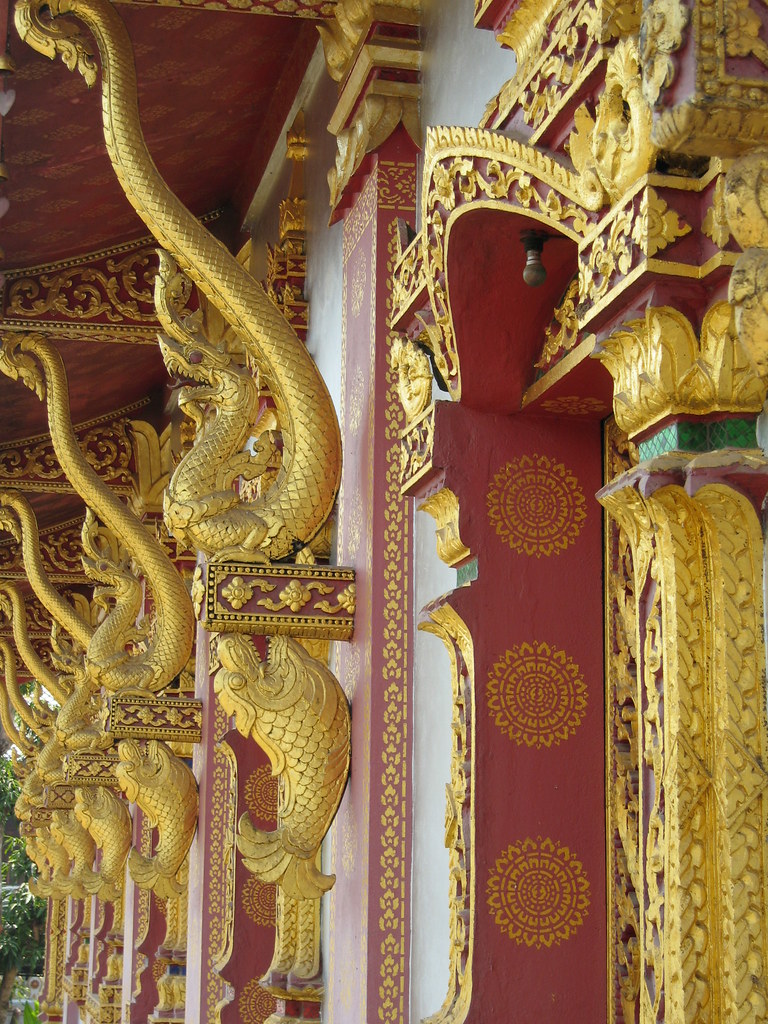
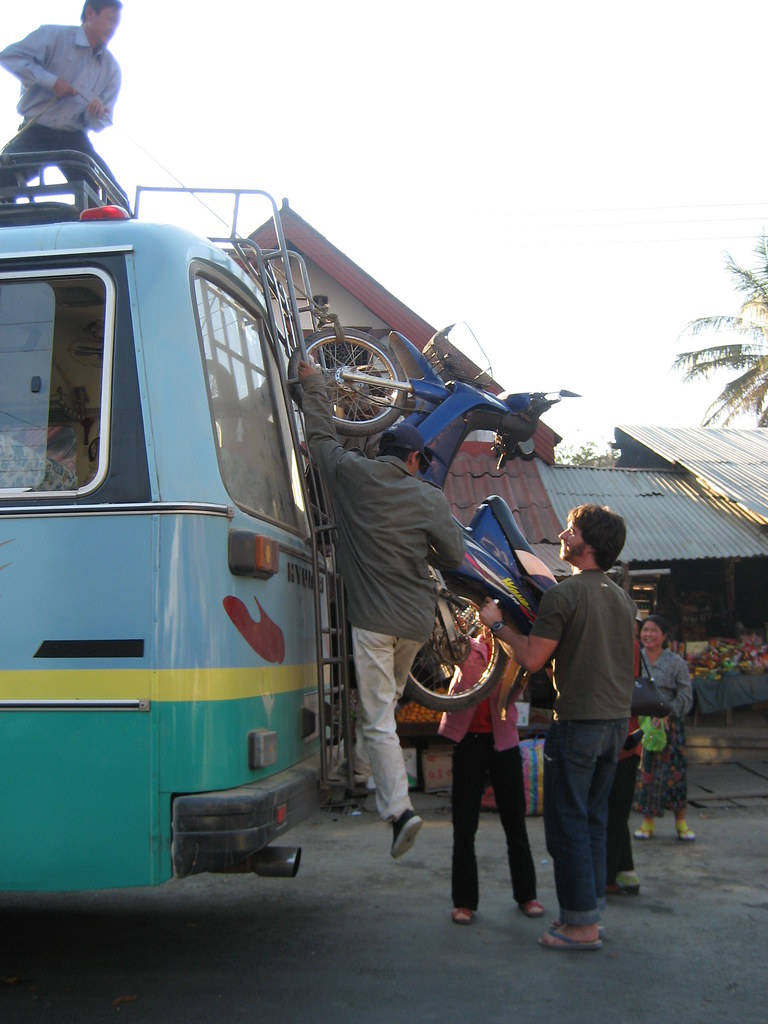 Having a big group of backpackers on the bus turned out to be a stroke of luck when we reached Pakmeng when the only tuk tuk driver in town wanted over a hundred thousand kip per truckload of foreigners he ferried on to the next destination Nong Khiaw. Without a group you're forced to pay big or simply wait for people to randomly turn up.
Having a big group of backpackers on the bus turned out to be a stroke of luck when we reached Pakmeng when the only tuk tuk driver in town wanted over a hundred thousand kip per truckload of foreigners he ferried on to the next destination Nong Khiaw. Without a group you're forced to pay big or simply wait for people to randomly turn up.